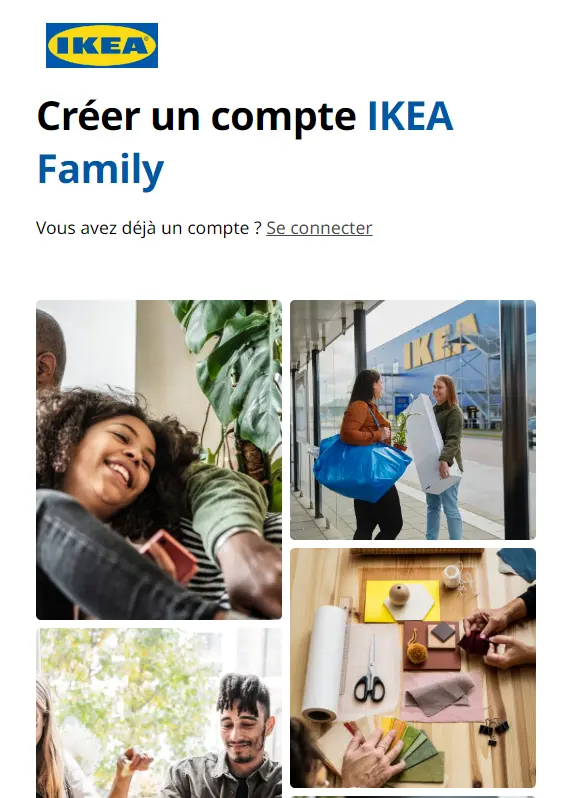The 5 key loyalty factors in retail
According to studies, between 80 and 85% of retail brands in France offer a loyalty program. Setting up a program has therefore practically become a prerequisite, as it is expected by loyal customers. However, although being the most obvious marketing tool for building loyalty, it is not the only lever, nor the most important. Moreover, if the transactional component is the basis, loyalty programs must go further, to offer a more complete experience to loyal customers of specialized distribution brands.
In 2023, why are consumers loyal to retail brands? And what lesson should these brands learn from it to improve their marketing strategy? Here is our point of view in 5 key points.
1. Brand image: the foundation of loyalty in retail
A Google analysis underlines that the exploration phase is decisive in the choice of a retail brand (in particular for visiting the brand’s site). This step during which one consults the site of a merchant who “comes to mind” precedes the rational comparison on elements such as the price, the opinions, and the technical information of the product. Thus 38% of consumers start by visiting the site of a brand that they are used to consulting for a certain type of product, based on their past experience. While 24% go to the brand’s website of the first retailer that comes to mind, without necessarily having already purchased from it.
This brings two lessons:
- brand loyalty is very important for retail purchases
- the top of the funnel (the notoriety and the image of the brand), in general, are decisive in the choice of a brand
Thus, even before defining a loyalty strategy, it is necessary to build and strengthen the brand: show how it is different, the values it embodies, its universe and that of its collections… In consumer psychology, the notoriety of the brand and its adequacy with the way of life that he projects for himself will contribute to his loyalty. Whether it’s fashion or decoration, the brand of the already known brand is a benchmark and a factor of confidence when looking for an item. And moreover, it can be purchases for oneself, or for loved ones: prescriptions and gifts are also a determining element of loyalty, in the context of specialized distribution.
Thus, the loyalty of retailers goes through branding campaigns. These communication investments do not necessarily have to be high: they must correspond to the context of the brand, which is very different between a brand already established in the landscape and an emerging and niche brand. These investments in image marketing must therefore be progressive. In the development phase of a brand, in particular, the most important thing is to identify and reach its core target, to retain a community. In this phase, well-targeted digital levers such as display, VOL or social media can be adapted, as well as an influence marketing strategy.
2. The shopping experience
If the image that the customer has of the brand is emotional, the shopping experience is a rational factor. Both are very important and complement each other in building customer loyalty in retail.
In retail (and e-retail), the quality of the customer experience depends on each of the following steps:
reception and merchandising (and its digital counterpart, e-merchandising): exploration and discovery of collections, in-store reception
the journey to purchase: advice, comparison of items, customer-seller interface, payment
reception of the product: packaging, discovery and handling content, on-boarding and registration of the product…
customer service after the purchase: personalization of responses, management of returns, privileged services for loyal customers…
In digital, creating a memorable experience means thinking about a fluid UX, mixing products and content, and offering paths adapted to the user’s search. The personalization of the offers put forward according to the profile and the routes is also a good practice, on the e-commerce side.
On the physical point of sale side, the experience must be different: the consumer comes to spend time, and he is looking for an immersive experience. Some stores are now real brand showcases, and offer a different approach to product discovery than searching on websites. The Lacoste Arena store on the Champs Elysées is a perfect example. The personalization of products with My Lacoste also shows an example of a link between the site (where the item is configured) and the physical point of sale (where it is picked up): if the site is the essential interface for marketing innovations , the physical point of sale remains an essential destination for immersing the customer in the universe of the brand and building loyalty.
3. Loyalty programs
The loyalty program is of course still an important customer marketing tool for retailers. Beyond the loyalty mechanisms, it encourages customer registration and thus the reporting of transactional data, essential for getting to know and communicating better with store customers.
The first dimension of a brand loyalty program is transactional: each purchase should be rewarded by the allocation of points, in proportion to the amounts spent. These points then give access to rewards, and, at certain levels, to discounts. This is the classic scheme. For the fluidity of the experience, it is important that the customer can be recognized at the checkout and view the key information of his loyalty account directly on the receipt. If points can be used for a discount, the checkout system informs the seller who can offer the discount to the customer.
This transactional component is a basic foundation, which assumes that the loyalty engine (the rules governing loyalty points and discounts) is interfaced with the cash register system.
However, the loyalty program must go beyond that and offer a richer experience to its customers: advantages with the brand and with partner brands, exclusive content, invitations to events, privileged treatment during visits, status-based services, etc.





